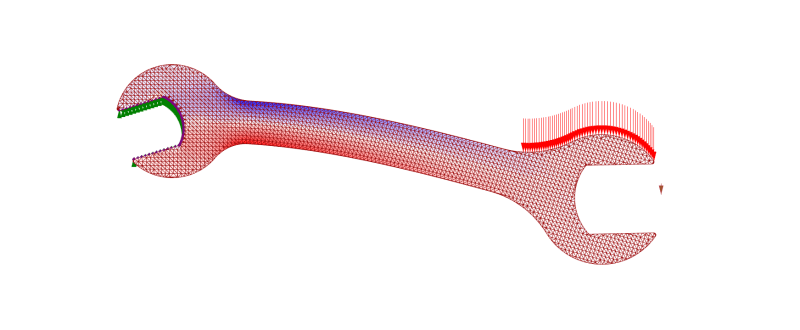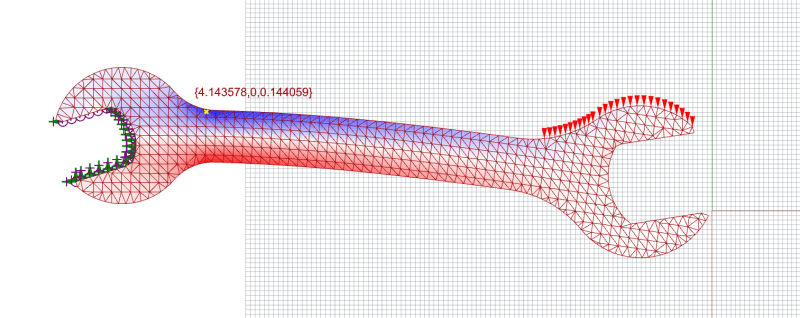CharlesFrench
Mechanical
Hi All,
As pictured below, I have an FEA carried out on a wrench.
I've applied 20kN across all red arrows whilst fixing all green points.
The main output of the simulations is the first principle force stated in kN/m per mesh face, where compression < 0 and tensile > 0.
My question is; how does one convert this output into an material that is rated for these figures?
Does the above contain sufficient information to make an educated guess? If not, what am I missing?
I understand that ultimate tensile strength is rated in MPa, what does my conversion look like?
Thanks,
Charles

As pictured below, I have an FEA carried out on a wrench.
I've applied 20kN across all red arrows whilst fixing all green points.
The main output of the simulations is the first principle force stated in kN/m per mesh face, where compression < 0 and tensile > 0.
My question is; how does one convert this output into an material that is rated for these figures?
Does the above contain sufficient information to make an educated guess? If not, what am I missing?
I understand that ultimate tensile strength is rated in MPa, what does my conversion look like?
Thanks,
Charles



